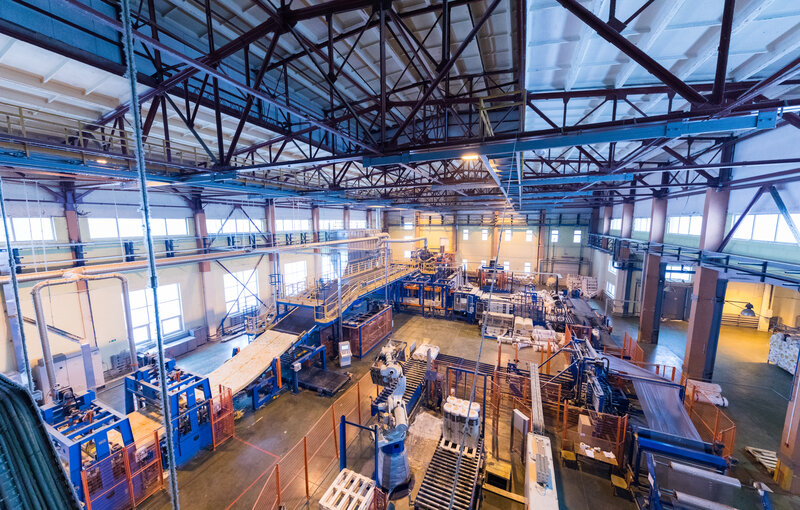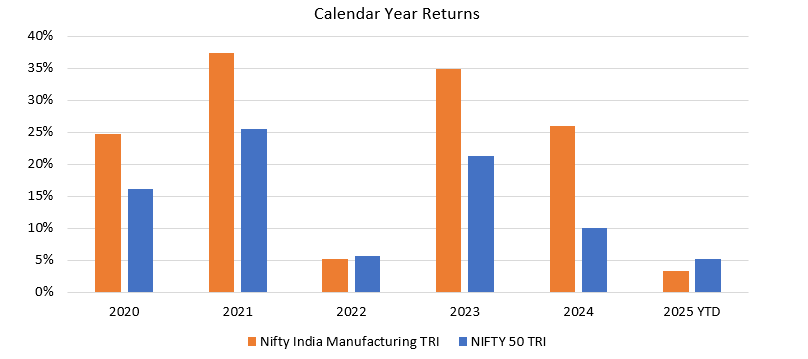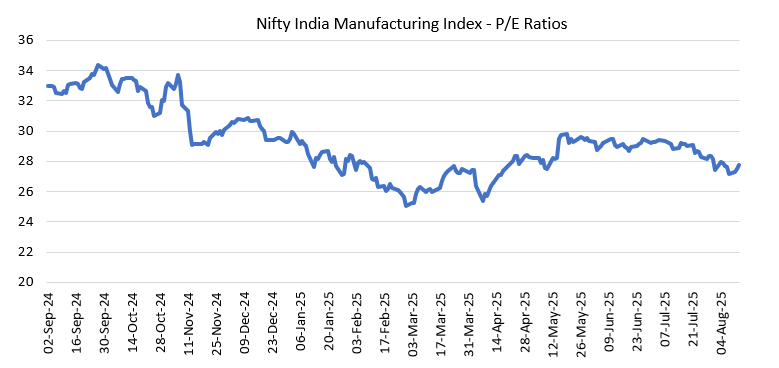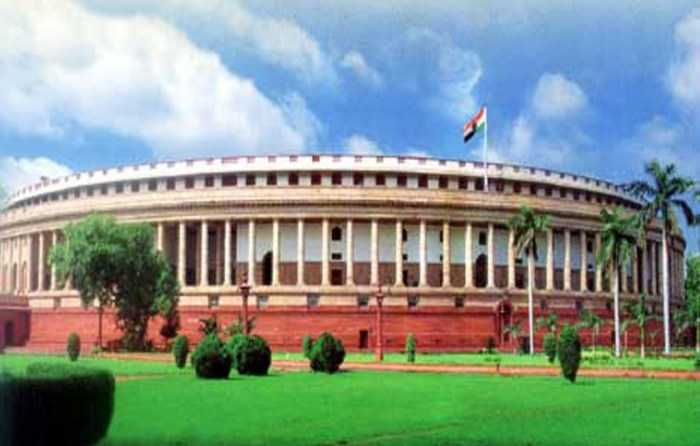Nippon India Nifty India Manufacturing ETF and Index Fund NFO: Participate in the India Manufacturing Story

Nippon India Mutual Fund has launched a thematic NFO based on manufacturing Theme (Nippon India Nifty India Manufacturing ETF and Nippon India Nifty India Manufacturing Index Fund). The ETF and Index Fund will track and replicate the Nifty manufacturing index. The NFOs have opened for subscription on 6th August 2025 and will close on 20th August 2025. The scheme will re-open for continuous sale & repurchase by 3rd September 2025.
In this article we will review Nippon India Nifty India Manufacturing ETF and Index Fund.
What comes under manufacturing?
Manufacturing is a broad investment theme covering a gamut of traditional sectors like automotive, consumer durables, pharma, building materials and chemicals. Manufacturing also includes sunrise sectors like defence, aerospace, electronics etc. The Nippon India Nifty Manufacturing ETF’s benchmark, the Nifty India manufacturing Index represents 10 industry sectors. (see graphic)

Importance of manufacturing in India Growth Story
Industrialization is the main driver of economic development and prosperity of nations. Developed economies are highly industrialized and manufacturing is the backbone of economic development. Manufacturing industries can become source of employment for large sections of the population, reduce economic inequalities and drive economic growth. India has traditionally been a consumption driven economy and services sectors have contributed a large percentage to our GDP (see the chart below). Service sector contributes 50% to India’s GDP versus only 13% contribution from manufacturing. Services also lead manufacturing in terms of employment (31% of India’s workforce in services versus 25% in manufacturing) and GDP growth.
However, there is a trend change towards manufacturing. In FY 2023-24, the growth in Real Gross Value Add (GVA) of manufacturing (9.9%) was higher than the real GDP growth rate. Seasonally adjusted capacity utilisation (CU) of the manufacturing sector at 75.3% in Q3, 2024-25 was higher than the preceding quarter and its level in the corresponding quarter a year ago. As per the results of the Reserve Bank’s 109th industrial outlook survey (IOS), manufacturing firms reported an improvement in demand conditions in Q4:2024-25. By FY 2031, the share of manufacturing will increase to 21% of the GVA (up from 13% in 2023). Wage cost advantage, higher labour productivity, low corporate tax rate and improving infrastructure will provide India the competitive edge in the global manufacturing market. Accordingly, manufacturing is set to play a key role in India Growth Story.
Government’s push for manufacturing
The Government has made manufacturing a key priority for economic development of India. From the Make in India initiative in 2014 to Atmanirbhar Bharat (2020), the Government’s focus has been to transform India into a global manufacturing hub.
- Make in India (2014): To turn India into centre for manufacturing, design and innovation.
- Industrial corridor development programme (11 corridors): To improve the connectivity and logistics.
- India Stack: Leveraging technology to ease economic bottlenecks and provide services at scale.
- PM Gati Shakti - NMP: Multi-modal infrastructure platform. Monetization plan aimed at creating a circular financing model.
- PLI schemes: Various schemes for 14 sectors (with an incentive outlay of Rs. 1.97 lakh crore) to enhance manufacturing capabilities and exports.
Higher FDI flows in manufacturing
The Government has liberalized the Foreign Direct Investment (FDI) policy allowing 100% FDI in nearly all sectors, except for certain prohibited sectors. The defence industry allows 74% FDI under automatic route and 100% under the government route. FDI inflows have seen a steady rise—from USD 36.05 billion in FY 2013–14 to USD 81.04 billion (provisional) in FY 2024–25, marking a 14% increase from USD 71.28 billion in FY 2023–24. FDI equity inflow in the manufacturing sector increased by 55% to reach $148.97B in 2014 - 23 compared to $96 B in the previous nine years (2005-2014). India is also becoming a hub for manufacturing FDI, which grew by 18% in FY 2024–25, reaching USD 19.04 billion compared to USD 16.12 billion in FY 2023–24. (Source: pib.gov.in).
Outlook for manufacturing
- With favourable demographics e.g. young population, rising per capita income, large and growing middle class, India is the largest aspirational population in the world. Rising prosperity will lead to higher discretionary spending and demand for premium products.
- Unlike other manufacturing dominated economies e.g. China, Indian economy is heavily dependent on domestic consumption. India’s domestic demand also makes Indian manufacturing less sensitive to global business cycles.
- Infrastructural inadequacies have prevented manufacturing industries realize its full potential and also constrained private capex investments. The Government has made a massive push in infrastructure spending since FY 2021. Government spending is likely to have a multiplier effect on private capex investments and industrial growth in India.
- There is a surge in new projects since FY 2020-21 across diverse sectors like electronics, non-electrical machinery, electrical machinery, construction materials, chemicals etc.
- India is in a favourable macro-economic situation relative to other major economies. The International Monetary Fund (IMF) predicts India’s GDP to grow by 6.8% in FY 2025, positioning it as the fastest-growing G-20 economy and forecasted to the third-largest economy by 2028.
- Amidst the Tariffs imposed by the Trump 2.0, Chief Economic Advisor (CEA) V. Anantha Nageswaran said that the Indian economy has not shown any signs of slowing down after the US' announcement of a 50 % tariff on Indian imports. He added that it is too early to assess the impact of the tariffs on India's GDP growth (Source: Mint). We have not seen market meltdown even in the face of adverse news, which indicates the resilience of the market. This implies that favourable macros driven by strong / resilient GDP growth, rising per capita income, expected surge in private sector capex spending on the back of Government spending on infrastructure, foreign investment flows in India etc. make the outlook for manufacturing in India positive.
In our view, the outlook for manufacturing is very bright in the medium to long term.
Why invest in the manufacturing theme?
- Manufacturing as an investment theme has outperformed the broad market
The chart below shows that the manufacturing sector has outperformed the broad market index Nifty 500 TRI since the economy opened up after the COVID 19 pandemic in 2020-21.

Source: Advisorkhoj Research as on 12.08.2025
- Lower weightage in the leading market indices
The weightage of services sectors in leading market indices like Nifty and Sensex is significantly higher than manufacturing sectors. As such, a thematic fund which focuses only on manufacturing industries and companies will be more suitable for investors who want exposure to the manufacturing theme, as opposed to investing in a diversified equity fund. - Valuations have moderated
The correction over the last 1 year or so, have brought down valuations to reasonable levels. Current valuations may provide attractive investment options in the manufacturing theme for long term investors.

Source: Advisorkhoj Research as on 12.08.2025
About Nippon India Nifty India Manufacturing ETF and Index Fund NFO
- Nippon India Nifty India Manufacturing ETF and Index Fund will track the Nifty India Manufacturing TRI.
- The Scheme seeks to achieve this goal by investing in securities constituting the Nifty India Manufacturing Index in the same proportion as in the Index.
- The fund follows a passive strategy of management with an endeavour to generate similar returns to its benchmark.
- The Scheme will invest at least 95% of its total assets in the securities comprising of the Underlying Index. The Scheme may also invest in money market instruments to meet the liquidity and expense requirements.
- The fund will be managed by Mr. Jitendra Tolani.
Who should invest in the Nippon India Nifty India Manufacturing ETF and Index Fund?
- Investors looking for capital appreciation over long investment tenures from India’s manufacturing growth theme.
- Investors looking for satellite allocations to their core portfolios.
- Investors with high to very high-risk appetites.
- Investors with minimum 5-year investment tenures.
- Investors need to have demat accounts to invest in Nippon India Nifty India Manufacturing ETF.
- Investors who do not have demat accounts can invest in Nippon India Nifty India Manufacturing Index Fund.
- Investors can invest Nippon India Nifty India Manufacturing Index Fund through Systematic Investment Plan (SIP).
Investors should consult their financial advisors or mutual fund distributors if Nippon India Nifty India Manufacturing ETF and Index Fund NFO is suitable for their investment needs.
Mutual Fund Investments are subject to market risk, read all scheme related documents carefully.
Queries
-
What is the benefit of mutual fund STP
Aug 29, 2019
-
How much to invest to meet target amount of Rs 2 Crores
Aug 26, 2019
-
Can I achieve my financial goals with my current mutual fund investments
Aug 24, 2019
-
Can you tell me return of various indices
Aug 19, 2019
-
What would be the post tax return on different investments
Aug 18, 2019
-
Which Principal Mutual Fund scheme will be suitable for my retirement corpus
Aug 16, 2019
-
What is the minimum holding period for availing NCD interest
Aug 4, 2019
Top Performing Mutual Funds
Recommended Reading
Fund News
-
Zerodha Mutual Fund launches Zerodha Nifty Short Duration G Sec Index Fund
Dec 26, 2025 by Advisorkhoj Team
-
Groww Mutual Fund launches Groww Nifty Chemicals ETF
Dec 26, 2025 by Advisorkhoj Team
-
DSP Mutual Fund launches DSP Nifty Next 50 ETF
Dec 19, 2025 by Advisorkhoj Team
-
DSP Mutual Fund launches DSP Nifty 500 Index Fund
Dec 19, 2025 by Advisorkhoj Team
-
Kotak Mahindra Mutual Fund launches Kotak Nifty Next 50 ETF
Dec 18, 2025 by Advisorkhoj Team














